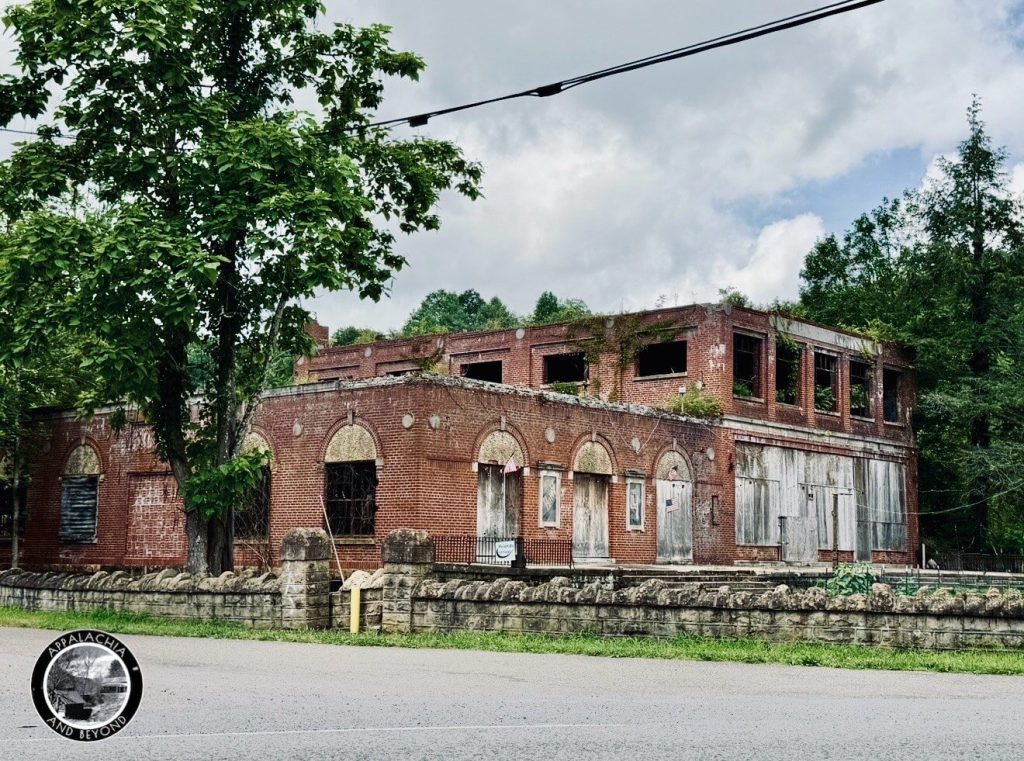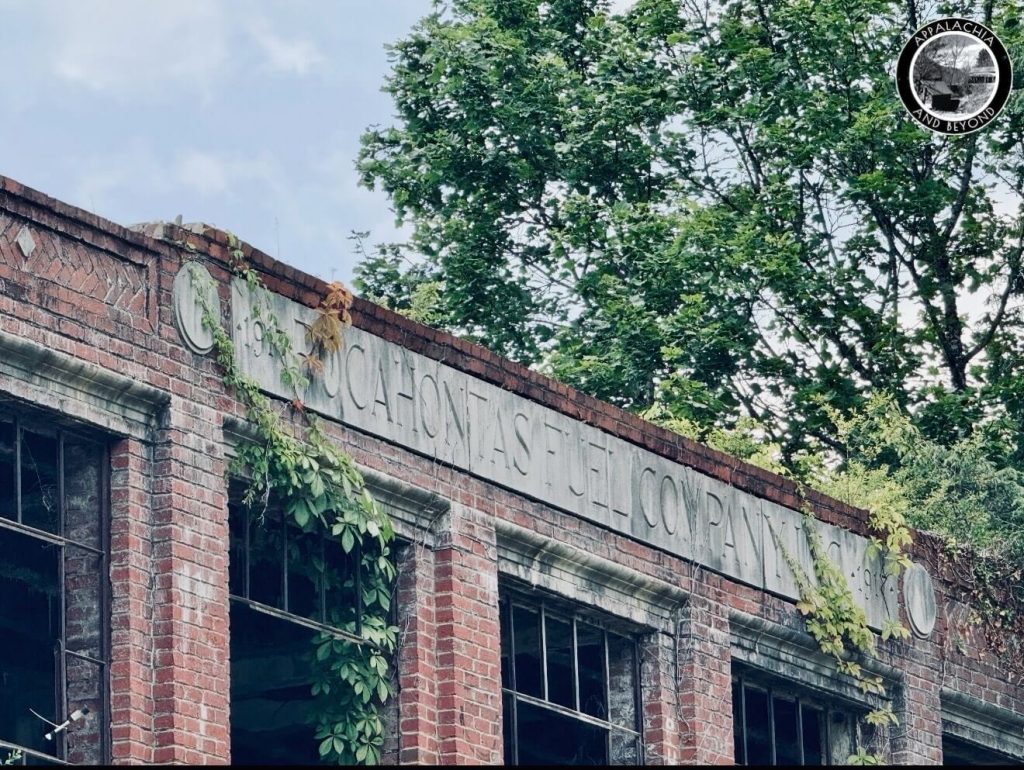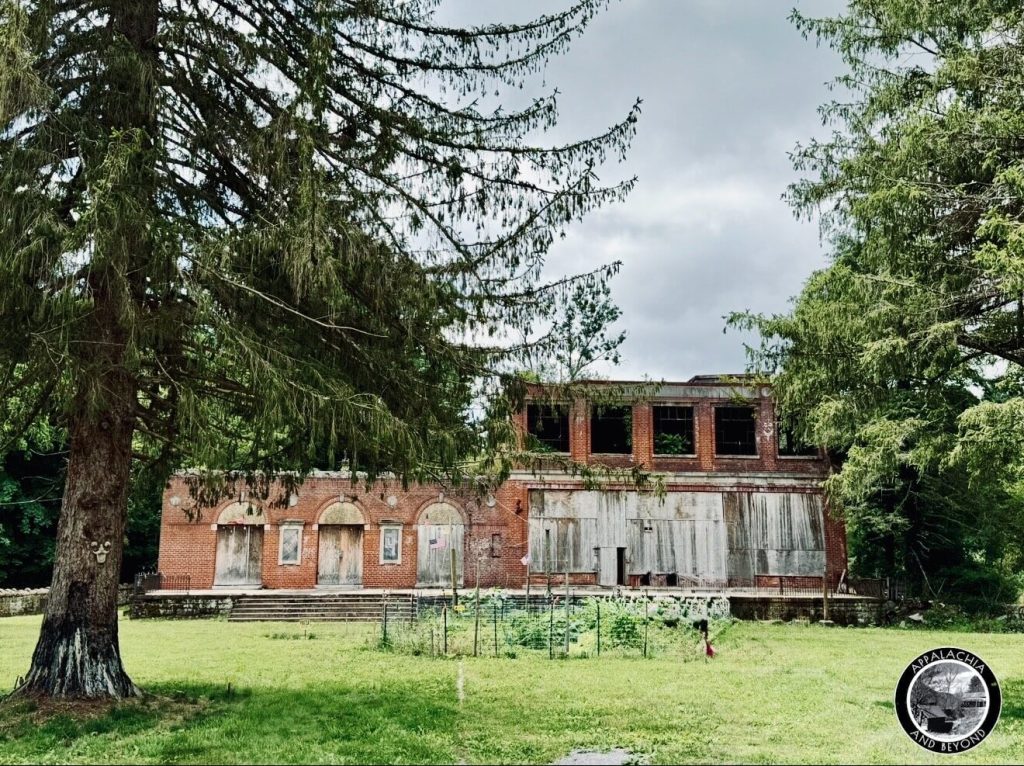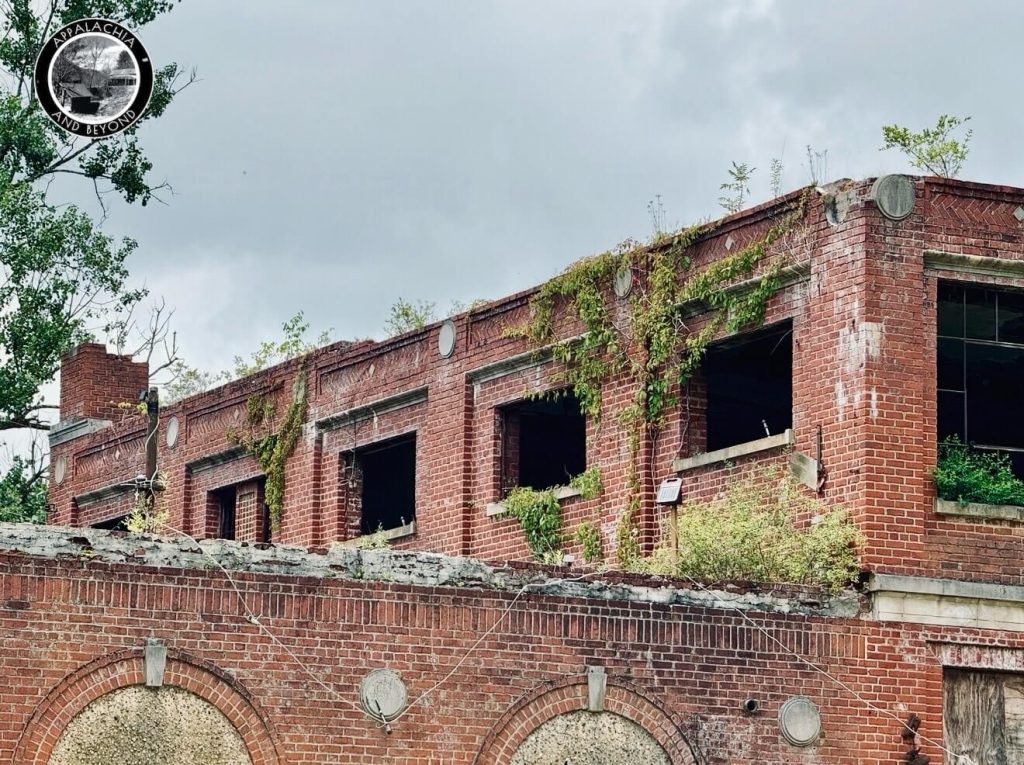Appalachian History

A store that anchored a town
When Pocahontas Fuel Company built out its Boissevain operation in Tazewell County, it gave the camp a brick centerpiece that was part supermarket, part office, and part civic hall. Period photographs from the Norfolk & Western Railroad collections confirm a substantial commissary complex standing at Boissevain in 1931 and again in December 1935, the very years that defined the camp’s heyday.
“Commissary” in the Pocahontas system
Boissevain’s store did not stand alone in concept. In 1917 Pocahontas Fuel invested in a series of architect designed stores and offices across its network, including Classical Revival examples at Switchback and at Jenkinjones in neighboring McDowell County, West Virginia. Those buildings are documented in National Register nominations that spell out their construction in 1917 and their typical roles as retail hub, post office, office wing, and social center. Boissevain’s commissary fits that same corporate store type and timeline.

Where people met, paid bills, and got care
Newspapers from the 1920s through the 1950s routinely listed Boissevain’s “Company Store” as a public meeting place. County health clinics set up shop there, and local event notices sent residents to “Boissevain Supply Co.’s Store” on scheduled days. These scattered clips tell the everyday story of how a company building doubled as the camp’s community room.
The 1932 disaster that shook the camp
On February 27, 1932, an explosion ripped through Pocahontas Fuel’s Boissevain mine. Virginia press reports that day placed the blast at the company’s Boissevain operation and counted dozens trapped. The U.S. Bureau of Mines letter report that followed gave the sober accounting that still sets the context for the town and the store that served it, naming the company, the seam, the workforce, and the official conclusion that an overcharged shot set off a dust explosion that killed 38 men.

Architecture and setting
Norfolk & Western photographs labeled “Commissary Pocahontas Fuel Company in Boissevain, Virginia” and “Pocohantas Fuel Co – Boissevain, VA” capture the massing and urban role of the complex along the railroad. Read alongside Pocahontas Fuel’s other 1917 era stores, the images make clear why company stores were designed as landmarks and why they sat close to tracks and roads, where freight and people moved most easily.
Boissevain in the wider coalfield
State survey work for Tazewell County describes how coal camps like Boissevain formed complete company controlled communities with housing, the store, and related services. Nearby Pocahontas, the corporate hub town, preserves the look of that system on a larger scale and shows how the railroad, the mine, and the store tied together across the coalfield.

What survives, and what to look for
Modern photo essays show the Boissevain store site in decline and document remnants of the mine complex. Even where walls have fallen, the company’s landscape is still legible in road alignments, rail beds, and scattered foundations that match what appears in the 1930s photographs.
Sources & Further Reading
Commissary Pocahontas Fuel Company in Boissevain, Virginia (Norfolk & Western Historical Photograph Collection, VT Special Collections), dated August 1931. Digital Library at Virginia Tech
Pocohantas Fuel Co – Boissevain, VA (Norfolk & Western Historical Photograph Collection, VT Special Collections), dated December 11, 1935. Digital Library at Virginia Tech
Suffolk News Herald, Feb. 27, 1932, wire report of an explosion at Pocahontas Fuel’s Boissevain mine. Virginia Chronicle
U.S. Bureau of Mines, Letter Report of Mine Explosion at Boissevain Mine, March 21, 1932. US Mine Disasters
Virginia newspaper notices using “Boissevain — Company Store” or “Boissevain Supply Co.’s Store” as a public venue, 1926 to the 1950s. Virginia Chronicle+4Virginia Chronicle+4Virginia Chronicle+4
Virginia Tech, Pocahontas Mines Collection, 1883–1997 finding aid, documenting drawings and maps for Pocahontas Fuel operations. EAD Library
Virginia Department of Historic Resources, Historic Architectural Survey of Tazewell County (2001), on the development and amenities of coal camps. DHR Virginia
West Virginia SHPO, NRHP nominations for Pocahontas Fuel Company stores at Switchback and at Jenkinjones, both built in 1917, for comparison of design and function. West Virginia Culture Center+1
CoalCampUSA, Boissevain, VA page, with comparative photographs of the store and mine complex over time. coalcampusa.com
Virginia DHR, Pocahontas Historic District nomination, background on the adjacent hub town and its corporate landscape. DHR Virginia
Author Note [Blank]